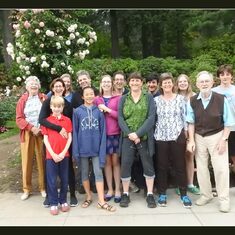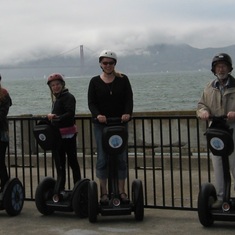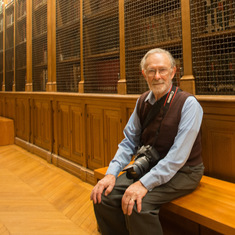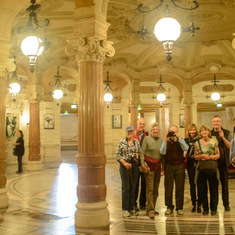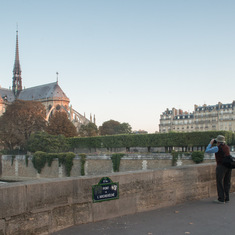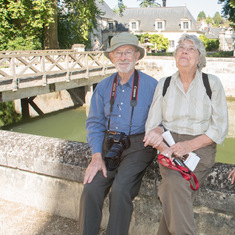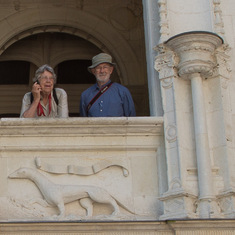1958 – Bitito Mieres was a very good driver in race cars. He used to compete in the same team as Manuel Fangio, who was world champion of formula 1 race cars. In 1956 Bitito participated in the famous Daytona Beach race for sports cars in Florida, USA. Daytona was second only to the Indianapolis 500 race in fame and glory in the USA and it was watched by millions of people around the country. it just happened that Bitito came in first place on that race, so he became very famous for a while. Car racing made his wife very nervous, so he promised her he would change sports and bought himself a Star and started competing in Argentina a few months before the Daytona race.
From Daytona Bitito flew to Chicago and bought himself the Star owned by Bert Williams who had come in first place in the World Championship the year before. He travelled from Chicago to San Diego in two and half days at top speeds of over 100 miles per hour with a trailer and a boat in tow. He said that after a little bit of practice he learned how to make the trailer skid on the sharp curves to avoid slowing down. He was stopped by the police a couple of times but when they found out who he was they let him go.
I met him in San Diego a couple of days before the first race so we had very little time to practice and get acquainted with the boat. The race was a disaster for us and we ended the Championship dead last among around 60 boats. The lack of Bitito’s experience and the boat did not help. His boat had won in Chicago in a lake with no currents and short waves in very strong wind. We were sailing in San Diego with light winds, current and long ocean waves. We had the wrong boat.
We had a good time in spite of that. We were on the front page of the San Diego newspapers, not for the sailing but because of Bitito having won the Dayton Beach race just a few days before. We got invited to parties almost every night.
1959-1964 – During this period I sailed as a crew on an International IC, which is a boat similar to the Dragon. My skippers were not too good, so we never won a race, however we made the first page of the Examiner, one Sunday Festival. We were racing the IC and in approaching a buoy another boat shouted “you are passing it on the wrong side”. I told him that buoy is not part of the course. My skipper went first one way then another until we hit the buoy with our front stay which broke and the whole mast broke ad fell on top of us. Luckily nobody got hurt. A power boat with all the reporters came to our rescue and threw us a line. My friend was at the bow, tow line in hand when somebody in the rescue boat told the captain we were ready, which we were not. The captain of the rescue boat acceleratedwhile my friend was trying to find a place to anchor the tow line, which when it tightened took my friend flying forward and into the air and then the water. The picture on the front page of the Examiner showed my friend flying in mid air like a bird. Unfortunately I lost a copy of that article.
1966 – This year the St. Francis organized The Pacific Coast Keel Boat Championship. All clubs from the Pacific coast were invited, but few came from far away. In any case the clubs from the San Francisco Bay area responded positively. In total 18 clubs participated.
We were members of the Lake Merritt Sailing Club; only dinghies were allowed to sail in Lake Merritt. The lake was too small and shallow, so most members had no experience with larger keel boats, except me and another member. We both expressed interest in representing the club, so we had 3 races in the Snipe class to select who would go. I won the first two, so there was no need to run the third one.
The St Francis managed to borrow 18 boats for the championship. Six were IC International, six were Tritons and six more were Challengers. All boats were around 30’ in length with a three man crew. In order to protect the boats, the owners were allowed to sail on the boats as passengers, but were not allowed to give directions. Also, no one was allowed to sail their own boat. This made the field quite even as the boats were rotated every two races, so you would race 6 boats of your class, say the Tritons, then you would sail 6 races on the Challengers and so on. In total you sailed 6 races.
I won 4 races and came in second in the other two, so I managed to win the Championship for my club.At the trophy presentation I got a really big cup for my club and I got a smaller replica for myself. My crew got a medal each as a souvenir.
There was an interesting incident. In one race I got the boat I used to crew some years back. People were feeling sorry for us because it had been last or close to last in all the races in the past season. We, on the other hand, felt that we had a certain advantage because we knew the boat, but if we brought that up it would delay the next race, so we decided not to mention it since the boat was theoretically slower, after all my friend had never won a race on it. We got out and the boat did not feel right so we started changing things until it felt better. Right from the start we shot in first place and never looked back. We won both those races. We got all kinds of congratulations after that.
I considered this my greatest accomplishment. For once I had no advantage or disadvantage with boats or weight and I was competing with the best sailors of every club.
1968 – 1972 – During this period I sailed with Nancy as a crew. We sailed in Snipes which is a 15-foot dinghy, because that is all we could afford.The Snipe is a good family boat because the boom is high and you don’t get hit on the head when you jibe. It has a center board and no keel, so you balance the boat with your weight. Because we weighed so little in those days, we had an advantage on the days with little wind, and a disadvantage on the windy days.
The very first day I took Nancy on a race it was blowing very hard so many people decided not to start. It was almost a survival test than a race. We finished fourth, all the others had abandoned. After that race I figured Nancy would not sail with me anymore but she was a good sport and kept on sailing with me in spite of having capsized three times.
In one of those races, we were sailing in Santa Cruz in the open ocean, when we capsized. On these races there is a rescue boat that patrols the course and they either did not see us or they were rescuing someone else. We managed to take the sails off and managed to right the boat but it was swamped so it would not sail very well, however we hoisted the small jib, and slowly but surely we got to the club. We had spent a lot of time in the water so we felt quite miserable. I thought surely Nancy was not going to want to sail any more after that fiasco, but she again was a good sport and kept on sailing with me.
In general we did quite well. We won the Bay Area season championship a couple of times and we made many friends with whom we socialized usually after the races. We hired a baby sitter to take care of the kids while we were racing.
We also bought a couple of El Toro boats for the kids, so sometimes we traveled with three boats, the Snipe on a trailer, one El Toro on top of the Snipe and one on top of the car.
This picture shows Sheila sailing with Michele in her El Toro.
1973 -1975 – Nancy and I organized what we called The Briones Sailing Club in the San Pablo Reservoir, which is a lake used for drinking water for the city of Orinda where we lived. No houses were allowed to be built around the water shed so the whole area around the lake was like a big park.
We bought 10 lasers, which we kept in an enclosed compound given to us by the water company. No motor boats were allowed in the reservoir because the water in the lake was drinking water. We made a deal with the water company: they provided the compound and we would organize sailing lessons for the public. Most of the people using the lake knew little about sailing so quite often they capsized and not only they had to be rescued but they contaminated the water, so the water company was interested in educating the public to alleviate the problem. No swimming was allowed. They did however allow us to have a small power boat that had a special outboard that did not contaminate the water.The power boat was used for rescuing capsized boats and for starting and patrolling races.
So it was that during the summer, Sheila had a job. She became an instructor, so she had fun and earned a little money in doing so.
The lessons started in a pool. When students see that the boat heels a bit, they get scared of capsizing so they let the main go, and stop the boat. In the pool they capsized a boat on purpose and then they had to right it up. This took away the fear of capsizing the boat and the lessons could proceed with less problems.We also had special sails made that were much smaller than standard sails so that the boats became less likely to capsize.
We charged $35.00 for a week of lessons.
Aside from sailing lessons, we organized weekend races for the club members and sometimes for other clubs as well. They were social events as well, because we had a picnic in between races. For the club members we used the lasers, so people did not have to have a boat to become members.
1976-1980- My company Kaiser Engineers transferred me to Rio de Janeiro, where we stayed for four years. I accepted the assignment provided the company my membership to the Sailing Club, which was $45,000 dollars, a large sum in those days. After just a few days in the office I discovered that one of the engineers was a member of the club. When I told him that I was going to apply for membership at the club, he told me there was a 7 to 10 year waiting list, which was very discouraging. One day I decided to go to the club to visit some of the sailors against whom I had competed in two previous South
American championships and they were very glad to see me and asked me whether I was going to join the fleet.I told them about the 7 to 10 year wait for membership. Two of these guys were members of the governing committee and they told me I could become a member the next day if wanted, privilege of Star sailors, which goes to show you that it is who you know that counts.
We did buy an old wooden Star that used to belong to Von Hutchler, a world champion a few years ago.
It was nice sailing in Guanabara Bay. We could sail in our bathing suits all year around. Every other weekend we spent at the club and we raced often but we did not do well. We were competing against more modern fiberglass boats and we did not have enough weight to keep the boat from heeling too much, but we enjoyed it anyway because of the camaraderie and the social life.
One day I received a call from Bitito inviting me to race with him in a Star in San Diego for the World Championship. I accepted immediately.
1983-2013 – When we got back from Brazil, I had the intention of purchasing another Snipe but Nancy refused to race with me anymore. She had gotten used to sailing in the warm waters in Brazil and she wanted no part of sailing again in the cold waters of San Francisco bay, so that ended my racing career.
While we were in Rio, the Briones Sailing club had been transferred to another reservoir in Lafayette, because they were repairing the one in Orinda and had drained the lake.Sailing lessons continued for three more years, and Doreen worked as a sailing instructor, but the insurance costs kept going up to a point that we were going to go bankrupt, so one day we organized a big farewell party, donated the boats to another sailing club and the Briones Sailing Club was no more.
One day my friend Jaime Villarroel called me to see if I was interested in buying a Columbia 24 in partnership. The price was right, so I immediately said "yes" without even taking a look at it. The Columbia 24 is a 24-foot long boat with 4 sleeping bunk beds, a small kitchen and a bathroom. I liked the boat because the cabin was tall and Nancy and I could be in it standing up. It made the boat a little ugly but its comfort was worth it.
We did not race this boat. It was slow and not in good shape but we took it out on some weekends for a sail in the Bay. We also cruised in it a few times. It was very comfortable inside. It was nice to take visitors out and tour them sailing underneath the Golden Gate Bridge, around Sausalito and Tiburon.
My favorite place was a small harbor in Angel Island where you could dock and have a picnic on the lawn in front of the museum.
One problem with that boat is that it had an outboard motor that was very heavy and difficult to install. We took it out of the water and washed it in sweet water at the end of a sailing day. I am pretty sure that handling that motor caused me to get my first hernia.
We were not using the boat that much and my partner Jaime was getting old and not using it either, so we finally decided to sell it. The year was 2014. We had also bought a Laser that our daughters used to use occasionally when they came to visit. We sold that one also. That marked the end of our sailing career. Jaime died a year later.
2005 – The Club Nautico Olivos organized the Star Class World Championship that year, so we timed our visit to Argentina to coincide with their racing schedule.
It just happened that one of the regatta judges was an old friend of mine from Brazil, so I was lucky to be invited to witness a couple of the races. Normally no passengers are allowed on the judge’s boat.There were about 50 boats from many different countries in competition. The following picture shows the start of one of the races.
I wasn't an instructor at Briones or before leaving for Brasil.I was 12 when we arrived in Rio.I became an instructor after I got back, in Lafayette, for three years, two while in high school, and one while in college.
